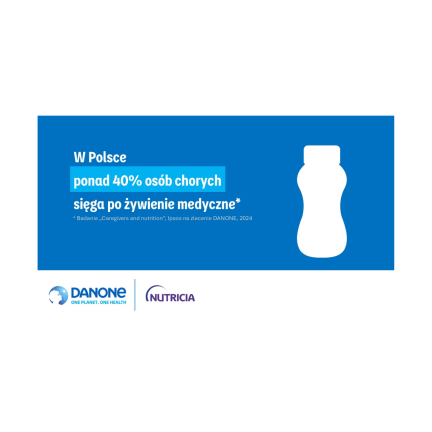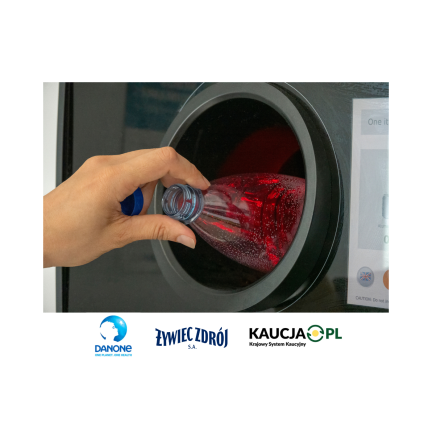Dla Twojego zdrowia
Z uwagi na wysoką gęstość odżywczą jogurtów, które są źródłem m.in. białka i wapnia, regularne sięganie po te fermentowane produkty mleczne i włączenie ich do codziennej diety może być szczególne pożądane przez osoby dbające o prawidłową podaż tych składników odżywczych. Jogurty zawierają również charakterystyczne kultury bakterii. Dzięki swoim charakterystycznym składnikom, uznawane są za wartościową przekąskę dla każdego[15].
[15] Nie dotyczy osób uczulonych na białko mleka krowiego
[16] https://ncez.pzh.gov.pl/wp-content/uploads/2022/06/Talerz-zdrowego-zywienia-i-zalecenia.pdf
[17] Prentice AM. Dairy products in global public health. Am J Clin Nutr. 2014;99(5 Suppl):1212S–6S.
[18] US Department of Agriculture and US Department of Health and Human Services. Dietary Guidelines for Americans, 2020–2025. 9th Edition. December 2020. https://www.dietaryguidelines.gov/sites/default/files/2021-03/Dietary_ Guidelines_for_Americans-2020-2025.pdf. Last accessed 26 July 2023 oraz Rizzoli R. Dairy products, yogurts, and bone health. Am J Clin Nutr. 2014;99(5 Suppl):1256S–62S.
[19] YINI Digest, Issue 1. November 2014. What added value does yogurt bring to dairy protein? https://www.yogurtinnutrition. com/wp-content/uploads/2015/03/digest_issue-01.pdf. Last accessed 26 July 2023
[20] Drewnowski A. Measures and metrics of sustainable diets with a focus on milk, yogurt, and dairy products. Nutr Rev. 2018;76:21–8
[21] Cederholm, T., Barazzoni, R., Austin, P., Ballmer, P., Biolo, G., Bischoff, S. C., ... & Muscaritoli, M. (2017). ESPEN guidelines on definitions and terminology of clinical nutrition. Clinical Nutrition, 36(1), 49-64.
[22] Iuliano S, Poon S, Robbins J, et al. Effect of dietary sources of calcium and protein on hip fractures and falls in older adults in residential care: cluster randomised controlled trial. BMJ. 2021;375:n2364
[23] Zhu Y, Jain N, Holschuh N, et al. Associations between frequency of yogurt consumption and nutrient intake and diet quality in the United Kingdom. J Nutr Sci. 2021;10:e85.
[24] Wojtasik A, Woźniak A, Stoś K.:Składniki mineralne w Jarosz M. (red.) w Normy Żywienia dla populacji Polski I ich zastosowanie. Narodowy Instytut Zdrowia Publicznego PZH. 2020
[25] Rizzoli R, Biver E. Effects of fermented milk products on bone. Calcif Tissue Int. 2018;102:489–500, De Lamas C, de Castro MJ, Gil-Campos M, et al. Effects of dairy product consumption on height and bone mineral content in children: a systematic review of controlled trials. Adv Nutr. 2019;10:S88–96 oraz Saviano DA, Hutkins RW. Yogurt, cultured fermented milk, and health: a systematic review. Nutr Rev. 2021;79:599–614.
[26] He M, Yang YX, Han H, et al. Effects of yogurt supplementation on the growth of preschool children in Beijing suburbs. Biomed Environ Sci. 2005;18:192–7
[27] Laird E, Molloy AM, McNulty H, et al. Greater yogurt consumption is associated with increased bone mineral density and physical function in older adults. Osteoporos Int. 2017;28:2409–19, Bonjour JP, Benoit V, Payen F, et al. Consumption of yogurts fortified in vitamin D and calcium reduces serum parathyroid hormone and markers of bone resorption: a double-blind randomized controlled trial in institutionalized elderly women. J Clin Endocrinol Metab. 2013;98:2915–21, Bonjour JP, Benoit V, Atkin S, et al. Fortification of yogurts with vitamin D and calcium enhances the inhibition of serum parathyroid hormone and bone resorption markers: a double blind randomized controlled trial in women over 60 living in a community dwelling home. J Nutr Health Aging. 2015;19:563–9 oraz Sahni S, Mangano KM, Kiel DP, et al. Dairy intake is protective against bone loss in older vitamin D supplement users: the Framingham study. J Nutr. 2017;147:645–52
[28] Bian S, Hu J, Zhang K, et al. Dairy product consumption and risk of hip fracture: a systematic review and metaanalysis. BMC Public Health. 2018;18:165, Michaëlsson K, Wolk A, Lemming EW, et al. Intake of milk or fermented milk combined with fruit and vegetable consumption in relation to hip fracture rates: a cohort study of Swedish women. J Bone Miner Res. 2018;33:449–57.
[29] Lee HJ, Kim SJ, Park YS, et al. Association between semi-solid yogurt intake and periodontitis in Korean adults. J Periodontal Implant Sci. 2019;49:206–14, Woodward M, Rugg-Gunn AJ. Chapter 8: Milk, Yoghurts and Dental Caries. Monogr Oral Sci. 2020;28:77–90, Bafna HP, Ajithkrishnan CG, Kalantharakath T, et al. Effect of Short-term Consumption of Amul Probiotic Yogurt Containing Lactobacillus acidophilus La5 and Bifidobacterium Lactis Bb12 on Salivary Streptococcus mutans Count in High Caries Risk Individuals. Int J Appl Basic Med Res. 2018; 8:111–5 oraz Wang J, Jin G, Gu K, et al. Association between milk and dairy product intake and the risk of dental caries in children and adolescents: NHANES 2011-2016. Asia Pac J Clin Nutr. 2021;30:283–90.
[30] Williams EB, Hooper B, Spiro A, et al. The contribution of yogurt to nutrient intakes across the life course. Nutr Bull. 2015;40:9–32 oraz Keast DR, Hill Gallant KM, Albertson AM, et al. Associations between yogurt, dairy, calcium, and vitamin D intake and obesity among U.S. children aged 8–18 years: NHANES, 2005–2008. Nutrients. 2015;7:1577–93.
[32] Marco ML, Heeney D, Binda S, et al. Health benefits of fermented foods: microbiota and beyond. Curr Opin Biotechnol. 2017;44:94–102, Wen L, Duffy A. Factors influencing the gut microbiota, inflammation, and type 2 diabetes. J Nutr. 2017;147:1468S–75S oraz Hill D, Sugrue I, Arendt E, et al. Recent advances in microbial fermentation for dairy and health. F1000Res. 2017;6:751.












